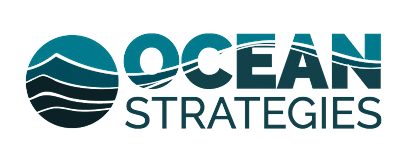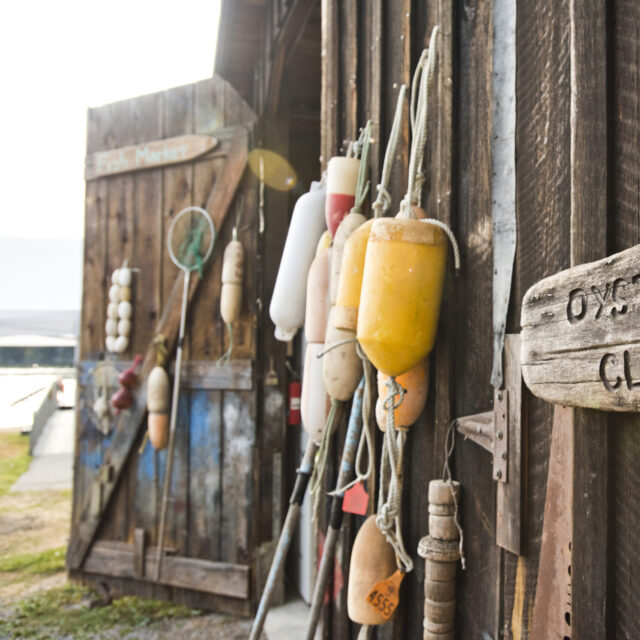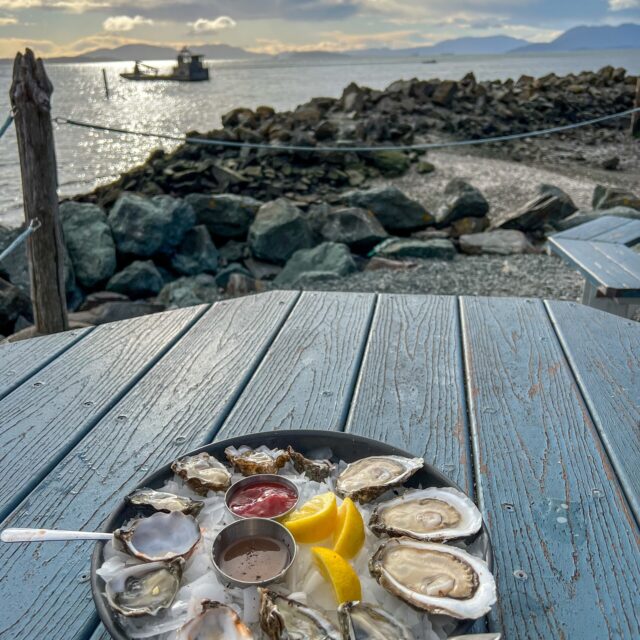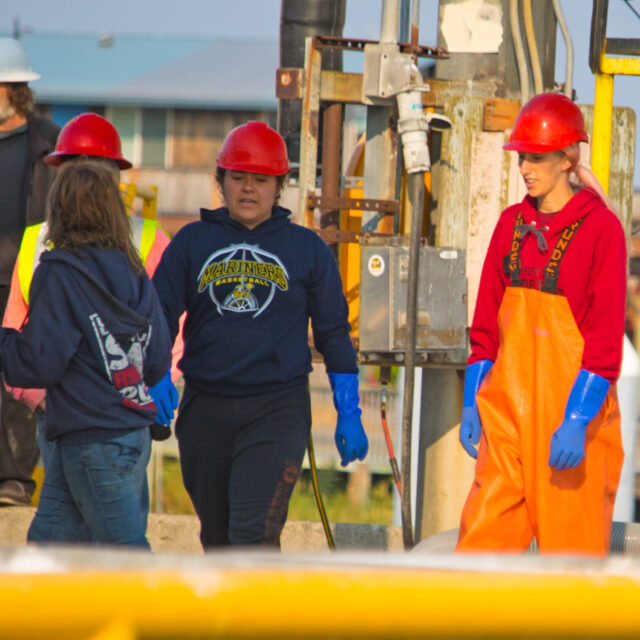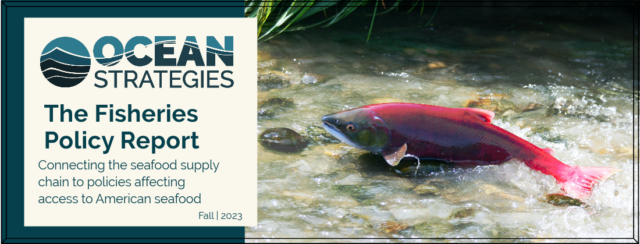
**Thousands of seafood leaders receive our updates right to their inboxes. Don’t miss out and sign up here.
ANALYSIS: Alaska’s salmon glut
A global market dip in salmon demand collides with record catches
An unusual tradition in Alaska’s salmon-producing powerhouse of Bristol Bay has combined with a global market glut of salmon — farmed and wild — to form disastrous consequences for fishermen.
Unlike most fisheries, Alaska’s Bristol Bay fleet fishes for weeks sometimes before the fishermen know what price processors are offering for the catch. After 2022’s record-shattering haul of sockeye salmon in the bay, some of which remained in cold storage at the start of the season, many fishermen knew the prices this year would be low.
But when word came that they’d be getting 50 cents a pound after getting more than a dollar per pound last year — just a hair above the 40 cents per pound offered in the early 2000s when the market flatlined with a global inventory glut from farmed salmon — frustration rippled through the fleet across the broad river system of the bay and spilled over into local boatyards as the season ended early for many crews.
Bristol Bay is known for being a relatively accessible fishery and stomping ground for new entrants into the industry. Many boats need crew and eagerly hire greenhorns from Alaska and the Lower 48, hoping for the best, promising experience and good pay for the gig. But it is also known for being a brutal season. When the nets are clogged, the openers are long and the closures not long enough to rest from the riotous harvest of the previous tide. When the nets are slack, no one is getting paid. And it’s all said and done in four to six weeks (not including prep time and haulout) for most of the fleet.
The payout is what makes a harsh season a risk worth taking for many in the fleet. And with many years of banner runs and no signs of a slowing market hunger for the product — until this year — the fishery seemed like it might go on defying the principles of supply and demand. But this year, it all came crashing down, and the effects are spreading far beyond the bay.
Trident Seafoods, a leader in Alaska salmon processing and sales, reduced its price for chum salmon to 20 cents per pound and announced it would stop buying Alaska salmon as of Sept. 1 — an unprecedented move.
The Alaska Seafood Marketing Institute is working on developing new markets in places like Latin America. While the long game of expanding global demand for wild seafood is key for the entire supply chain, salmon fishermen are looking for more immediate answers — ideally to shorten the pain point and prevent widespread boat and permit sales.
One of the ideas being tossed around is a minimum price guarantee from processors. Whether the fishermen find themselves in a position for mediation assistance with the sector that writes their checks remains to be seen.
Federal Fisheries Policy: Fisheries and the Farm Bill
Advocates seek expansion of USDA programs to be more inclusive of commercial fishermen and seafood
This summer, the U.S. Department of Agriculture bought 3.7 million pounds of wild Alaska sockeye salmon filets and cans with $60 million from its Section 32 program. The program’s funds are often applied to commodity surpluses to mitigate market constraints and feed public aid outlets like food banks and school lunch programs. USDA has also purchased more than $120 million worth of Alaska pollock and salmon in 2023.
Seafood leaders and politicians across the country are angling for more industry support through the USDA, including provisions in the Farm Bill — the Agriculture Improvement Act — which is up for a five-year reauthorization on Sept. 30.
Alaska Sens. Lisa Murkowski and Dan Sullivan both introduced legislation this year that would incorporate aspects of seafood oversight and production into the USDA. The bills were developed to be incorporated into Farm Bill negotiations.
Murkowski’s Improving ARCTIC Act would extend USDA’s farming and ranching program eligibility to commercial fishermen. It would also open Farm Credit opportunities to the fishing industry and prohibit any federal agency from regulating offshore finfish farming — an activity that is not allowed in Alaska waters, according to the state’s constitution. The bill would also establish a Wild USA Seafood label for fish harvested in domestic waters and add labeling requirements for genetically modified or lab-cultivated fish.
Sullivan’s bill would establish an Office of Seafood Policy and Program Integration to help coordinate seafood policies and activities throughout the USDA, and would expand USDA loan programs to commercial fishermen.
The next Farm Bill is expected to be in place from 2024 through 2029, which makes it a critical component of our domestic climate goals and commitments, including investments in technologies to ensure food security, build climate-resilient food systems, and diversify our supply chain — all of which are central goals in the fisheries and aquaculture sectors, as well as land-based food producers.
Advocates for the inclusion of seafood production in the bill argue that our domestic food system would benefit from a holistic approach that opens funding opportunities across the board to all food producers.

NOAA releases National Seafood Strategy
Five-year plan is guided by four primary goals
NOAA Fisheries has released a five-year National Seafood Strategy that is designed to run through 2028.
The strategy has four leading goals, including a call to evolve the agency’s science, management and data-sampling technologies in response to oceanic and atmospheric changes and to create a climate-ready seafood sector — that’s in addition to the status quo of maintaining or increasing sustainable wild harvests through fisheries science, management and habitat conservation.
The second goal is to increase sustainable aquaculture production, primarily by improving regulatory and permitting constraints and providing science-based strategies and tools to minimize the environmental effects of aquaculture.
The third goal is to improve access to domestic and global markets through communication and promotion, developing the U.S. market and promoting a fair and sustainable international seafood trade.
The fourth goal is to strengthen the U.S. seafood sector broadly through workforce development, equity and environmental justice, modernizing infrastructure and supporting the blue economy of commercial fishing, marine aquaculture and other seafood communities.
NOAA Fisheries developed the plan using 150 public comments, more than half of which came from individuals and businesses. Among other changes, comments led to adding equity and environmental justice to Goal 4. A plan to implement the goals is in development and will also be informed by public comments.
Washington DC Reel: Alaska Rep. Mary Peltola on federal fisheries updates
In an interview with Ocean Strategies, Peltola explains how she is prioritizing fishery policy despite a gridlocked Congress. NOAA is proposing updates to guidelines for the MSA’s National Standards.
“It can’t just be elected people doing this work. It has to be people like you,” Peltola says. “There has to be an outside push. The system that we have in America is one where the elected officials are not the thermostat, we’re the thermometer. The public is the thermostat. We need as much pressure as ever from fishermen to make sure there’s the political will.”
Shortly after this interview, the Department of Commerce released its Advanced Notice of Proposed Rulemaking to make guideline updates to 3 of the 10 National Standards. Fishermen can read the notice here and provide comments until September 12, 2023.
“We have to have our commercial fishing sector. It is a huge pillar of our Alaskan economy… It’s our identity for most of us. And it’s a family business. And it’s everything to us, It’s not only our identity, but our identity back through the generations. Like if you look at Petersburg, they’re Scandinavian fishermen. It’s in their blood. Almost every community in Alaska, it’s part of our identity in one way or another.”
Catch the full interview at Ocean Pulse.
NOAA releases first Equity and Environmental Justice Strategy
Agency prioritizes equitable delivery of services
Earlier this year, NOAA Fisheries released its first ever Equity and Environmental Justice Strategy to help guide agency staff and activities to serve all communities more equitably and effectively.
“While NOAA Fisheries’ work has incorporated elements of EEJ,” the agency says in its introduction, “our efforts to date have not met the scope, magnitude, and duration of the challenges facing underserved communities.”
The goals of the strategy are to:
- Prioritize identification, equitable treatment, and meaningful involvement of underserved communities
- Provide equitable delivery of services
- Prioritize equity and environmental justice in our mandated and mission work with demonstrable progress
The objectives of the strategy are to:
- Provide an empowering environment within our agency to support multiple equity and environmental justice approaches
- Incorporate equity and environmental justice in our agency policies and plans
- Achieve equity in research and researching equity
- Outreach and engage equitably
- Equitably distribute benefits
- Ensure inclusive governance
Since its release, NOAA Fisheries has incorporated elements of its EEJ strategy into a new National Seafood Strategy and in a call to potentially update federal guidelines for fishery managers.
The strategy was developed as a component of the Department of Commerce’s Equity Action Plan, which was in response to Biden administration executive orders 13985 and 14008 to promote equity and environmental justice within the federal government and its external-facing efforts.
International Fishing: NOAA’s latest IUU report
Biennial report identifies key nations to work with to address illegal fishing and forced labor in the seafood sector
NOAA Fisheries issues an international fishery management report to Congress every other year. The report focuses on identifying key nations and entities to work with to address illegal, unregulated and unreported (IUU) fishing and forced labor in the seafood sector, as well as to support management of protected species, bycatch and shark catch.
The 2023 report, issued at the end of August, commends Costa Rica, Guyana, Senegal and Taiwan for taking actions to remedy IUU fishing activities noted in the 2021 report.
The report also categorizes Mexico, the People’s Republic of China (PRC), and the Russian Federation as failing to take actions to remedy IUU fishing activities previously reported.
The agency works with identified nations and entities for two years before reaching a determination.
The 2023 report identifies Angola, Grenada, Mexico, the Gambia, and Vanuatu for reported or alleged IUU fishing that occurred between 2020 and 2022. The PRC and Taiwan were identified for reported or alleged IUU fishing as well as for information related to forced labor in the seafood sector.
The PRC and Vanuatu were identified for shark catch where those nations do not have a comparable regulatory program to that of the United States.
In April, Sens. Dan Sullivan (R-Alaska), Sheldon Whitehouse (D-R.I.), Lisa Murkowski (R-Alaska), Brian Schatz (D-Hawai’i), and Roger Wicker (R-Miss.) introduced the Fighting Foreign Illegal Seafood Harvest (FISH) Act.
In addition to directing NOAA to blacklist vessels from U.S. ports and waters if they have engaged in IUU fishing, the act would direct the Coast Guard to increase its at-sea inspection of foreign vessels suspected of IUU fishing. It would also require the administration to establish a report on new technologies that may aid in the fight against IUU fishing, the complexities of the seafood trade relationship between Russia and China, and the success of prosecutions against IUU fishermen operating in U.S. waters.
Resources
Report Summary
Full Report
WHAT WE’RE READING
Salmon-killing tires
The chemical, 6PPD, is used to prevent tires from degrading too quickly. However, it breaks down into 6PPD-quinone when exposed to ground-level ozone. The new chemical can kill coho salmon within hours of exposure and can lead to urban runoff mortality syndrome, according to environmental nonprofit Earthjustice, which is representing the Institute for Fisheries Resources (IFR) and the Pacific Coast Federation of Fishermen’s Associations (PCFFA) in the lawsuit. >>Read more at SeafoodSource
R.I. wind advisory body resigns en masse
In a letter sent Thursday, Aug. 31, to Rhode Island Coastal Resources Management Council (CRMC) Executive Director Jeff Willis, the entire Rhode Island Fishermen’s Advisory Board (FAB) declared its members were resigning effective immediately. The decision comes amid mounting tension between offshore wind developers and fishermen over the slew of offshore wind projects planned in and around Rhode Island waters. >>Read more at Rhode Island Current
EPA head: Proud of Pebble decision
“Let me be clear, we are very proud of our decision to really evaluate the Pebble Mine project and do what is necessary to protect Bristol Bay,” Environmental Protection Agency Administrator Michael Regan said in a telephone interview with The Associated Press on Tuesday as he began a four-day tour of Alaska, starting in a Bristol Bay village. >>Read more at Associated Press News
What Does Your Working Waterfront Need?
The National Working Waterfront Network is looking for input on concerns and opportunities for working waterfronts (e.g., workforce development, public access, waterfront infrastructure, transportation, regulations, funding, data).
The network, which is dedicated to supporting and preserving working waterfronts and coastal communities, is crafting a policy memo that will include recommendations at the local, state, and federal levels and is seeking input.
Share your ideas online or email Shannon Hogan with questions.

Ocean Strategies Policy Reports & Newsletters
We understand crowded inboxes conflicting with the need to stay informed on critical seafood and fisheries policy changes. Below is a list of links to our most recent policy reports. You can also find them on our Ocean Pulse blog.
